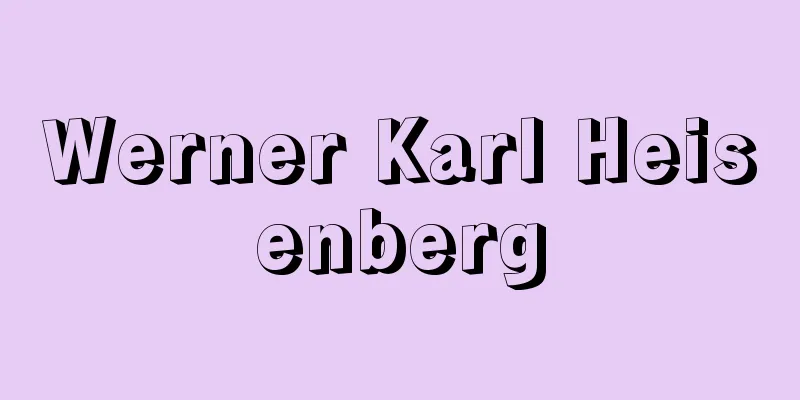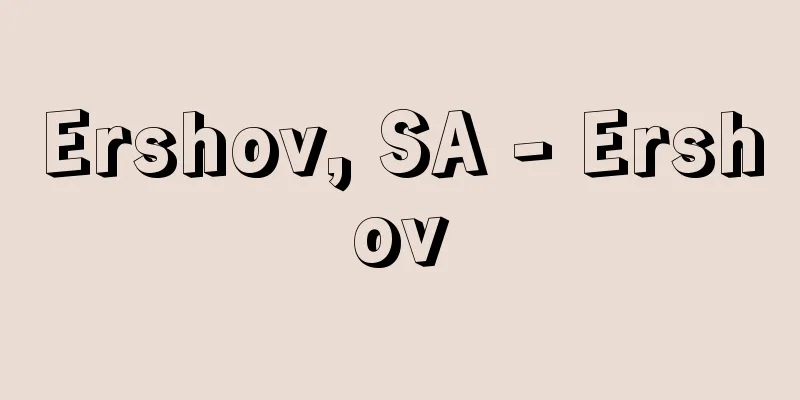Werner Karl Heisenberg

|
German theoretical physicist. Founder of quantum mechanics, the fundamental law that governs the microscopic world. As one of the leading theoretical physicists after Einstein, he had a major impact not only on physics but also on the world of thought. He was awarded the Nobel Prize in Physics in 1932 for his creation of quantum mechanics (especially the discovery of ortho- and para-hydrogen) the following year in 1933. He was born in Würzburg on December 5, 1901. He grew up in a privileged family, with his father, a scholar of medieval and early modern Greek (Byzantine) and a professor at the University of Munich, living in Munich from the age of nine. He was a child prodigy during his school days, and excelled in mathematics. He wanted to study mathematics at the University of Munich, but was told by his mathematics professor that he was already "too dirty," so he gave up and studied theoretical physics under Sommerfeld. Sommerfeld, who recognized Heisenberg's extraordinary talent, gave him a cutting-edge research topic at the time when he entered the university, and published his first academic paper six months later. In his second year, he listened to a series of lectures by Bohr at the University of Göttingen, and his sharp questions caught Bohr's attention, marking the beginning of their relationship as teacher and student, and close friends. Sommerfeld made sure that Heisenberg studied classical physics, and his doctoral thesis in 1923, on "Turbulence in Fluids," was highly praised. That same year, he became Born's assistant at Göttingen. In a letter to Born's Sommerfeld, he wrote, "I have come to like Heisenberg very much. He is popular and the envy of everyone here. Not only is he a man of unprecedented talent, but I am also pleased by his affable and humble nature. He is always in a good mood, full of enthusiasm, and has a rich sensitivity..." In 1924, he qualified as a university instructor under Born, and for six months from 1925 to 1926, he studied under Bohr in Copenhagen, where he had a most fulfilling research life. In the summer of 1925, while recuperating from hay fever on the island of Helgoland, he had a crucial inspiration for establishing quantum mechanics. In his later years, he would tell his wife about that experience, "I was blessed with the great good fortune of being allowed to peer over God's shoulder at his work." He was 23 years old at the time. Later, with the help of Born and Jordan, he perfected quantum mechanics in matrix form. Inspired by a discussion with Einstein, he proposed the so-called "uncertainty principle" in 1927, establishing the Copenhagen interpretation of quantum mechanics. In the same year, he became a professor at the University of Leipzig, where he trained many students, including Nobel Prize winners such as Bloch and Bethe, making Leipzig a mecca of physics on a par with Copenhagen. In 1929, he toured America, Japan, India and other countries with Dirac to give lectures, inspiring young physicists such as Hideki Yukawa and Shinichiro Tomonaga, who had just graduated from university. After quantum mechanics, he published a series of world-leading works, including "Theory of Ferromagnetism" (1928), "Quantum Field Theory" (1929), "Theory of Nuclear Structure" (1932), "Theory of the S-Matrix" (1943), and "Theory of Multiple Meson Production" (1949). In the last 20 years of his life, he was passionate about constructing a "unified field theory of elementary particles," but passed away before completing it. During World War II, he became the de facto leader of Germany's uranium program, but he was afraid of building an atomic bomb for Hitler, so he limited his research to small-scale nuclear reactors. After the war, he worked hard to rebuild German science, and served as director of the Max Planck Institute for Physics from 1946 to 1970. He also placed importance on international exchange among young scholars, and served as president of the Humboldt Foundation from 1953 until his death. In 1957, together with 18 German nuclear physicists, he led the "Gottingen Manifesto" which opposed the nuclear armament of the German Wehrmacht. In 1967 (Showa 42), he visited Japan for the second time. He practiced piano, skiing, mountain climbing, table tennis, and other sports thoroughly, becoming proficient in all of them, which helped him to relax from work that required concentration. He died on February 1, 1976 at his home in Munich. [Kazuo Yamazaki] "The Part and the Whole" by W. Heisenberg, translated by Kazuo Yamazaki (1974 / New edition, 1999, Misuzu Shobo)" ▽ "The Thought and Life of Heisenberg" by A. Hermann, translated by Kazuo Yamazaki and Michio Naito (1977, Kodansha)" ▽ "Reminiscences of Heisenberg" by E. Heisenberg, translated and edited by Kazuo Yamazaki (1984, Misuzu Shobo)" [References] | | | | | | |elementary | | | | | | | | | | |Source: Shogakukan Encyclopedia Nipponica About Encyclopedia Nipponica Information | Legend |
|
ドイツの理論物理学者。ミクロの世界を支配する根本法則である量子力学の創始者。アインシュタイン以後の代表的理論物理学者として、物理学のみならず思想界にも大きな影響を与えた。1932年のノーベル物理学賞を、量子力学の創始(とくにオルト、パラ水素の発見)により、翌1933年に受賞。 1901年12月5日ウュルツブルクに生まれる。中・近世ギリシア語(ビザンティン)学者でミュンヘン大学教授となった父を中心に恵まれた家庭で成長、9歳以後はミュンヘンに住み、学校時代は神童の誉れ高く、とくに数学を得意とした。そこでミュンヘン大学で数学を学びたいと思ったが、数学教授にすでに「汚れすぎている」といわれて断念、ゾンマーフェルトの下で理論物理学を学ぶこととなる。彼の尋常でない才能を見抜いたゾンマーフェルトは、大学入学と同時に、当時の第一線の研究テーマを与え、半年後には最初の学術論文を発表する。2年目にはボーアの連続講義をゲッティンゲン大学で聞き、鋭い質問がボーアの注目するところとなり、二人の師弟、親友としての交際の端緒となった。ゾンマーフェルトはハイゼンベルクに対して古典的な物理学を学ばせることを忘れず、1923年の学位論文は「流体の乱流」に関するもので、高く評価された。その年、ゲッティンゲンのボルンの助手になる。ボルンのゾンマーフェルトにあてた手紙には「……私はハイゼンベルクがすっかり気に入ってしまいました。彼は当地のみんなの人気と羨望(せんぼう)の的です。前代未聞ともいうべき才能の持ち主であることもさることながら、うれしく思うのは彼の感じのいい謙虚なひととなりです。いつも上機嫌で熱意にあふれ、豊かな感受性をもっています……」と書かれている。1924年ボルンの下で大学教官資格を取得し、1925年にかけての半年間、あこがれのコペンハーゲンのボーアの下へ留学、もっとも充実した研究生活を送った。 1925年夏、枯草熱(こそうねつ)の療養のためヘルゴラント島に転地していて、量子力学建設のための決定的なひらめきを得た。晩年、彼は妻にそのときのことを「私は神のみ業(わざ)を、その肩越しにかいまみることを許されるという、大きな幸運に恵まれた」と語ったという。彼が23歳のときのことである。その後、ボルンとヨルダンの協力を得て、行列形式による量子力学を完成させる。アインシュタインとの討論からヒントを得て、1927年いわゆる「不確定性原理」を提唱し、量子力学のコペンハーゲン解釈を確立させる。同年ライプツィヒ大学の教授となり、ブロック、ベーテらのノーベル賞受賞者を含む多数の弟子を育て、ライプツィヒをコペンハーゲンと並ぶ物理学のメッカとした。 1929年、彼はディラックとともにアメリカ、日本、インドなどを講演旅行し、大学を卒業したばかりの湯川秀樹(ひでき)、朝永振一郎(ともながしんいちろう)ら若い物理学者に大きな刺激を与えた。量子力学以後も世界をリードする大きな仕事を相次いで発表、その代表的なものに、「強磁性体の理論」(1928)、「場の量子論」(1929)、「原子核構造論」(1932)、「S行列の理論」(1943)、「中間子多重発生の理論」(1949)などがある。晩年の20年間は「素粒子の統一場の理論」の建設に意欲を燃やしたが、未完成で世を去った。 第二次世界大戦中はドイツのウラン計画の実質的な指導者になったが、ヒトラーのために原爆をつくることになるのを恐れ、小規模な原子炉の研究にとどめた。戦後ドイツ科学の再建に尽力し、1946年から1970年までマックス・プランク物理学研究所所長を務めた。また若い学者の国際交流を重視し、1953年から終生、フンボルト財団総裁の任にあり、1957年には18人のドイツ人核物理学者とともにドイツ国防軍の核武装に反対する「ゲッティンゲン宣言」の主導者となる。1967年(昭和42)二度目の来日をした。ピアノ、スキー、登山、卓球などすべてに徹底した練習で熟達、これらが集中力を必要とする仕事の気分転換に役だった。1976年2月1日ミュンヘンの自宅で死去した。 [山崎和夫] 『W・ハイゼンベルク著、山崎和夫訳『部分と全体』(1974/新装版・1999・みすず書房)』▽『A・ヘルマン著、山崎和夫・内藤道雄訳『ハイゼンベルクの思想と生涯』(1977・講談社)』▽『E・ハイゼンベルク著、山崎和夫訳・編『ハイゼンベルクの追憶』(1984・みすず書房)』 [参照項目] | | | | | | | | | | | | | | | | | |出典 小学館 日本大百科全書(ニッポニカ)日本大百科全書(ニッポニカ)について 情報 | 凡例 |
Recommend
Giwan Choho
A politician and poet in the final days of the Ry...
Swordsmith - Katana
A craftsman who specializes in making swords. The...
Karnak
…The largest temple in ancient Egypt, known as Ip...
theosophia
...Plotinus was influenced by the philosophies of...
idyll
…the translation of pastoral. Its origin is the L...
Pleurodeles
...The young live on land for one to three or fou...
Mandatory Lawsuit - Gimzuke Sosho
A lawsuit seeking to order an administrative agenc...
Petropavlovsk-Kamchatskii (English spelling)
The capital of Kamchatka Oblast, on the eastern ed...
scamnum
...The batron was also used as a footstool for th...
Mysticeti
…This family and the Narwhalidae family appear to...
Daito Palace
[1] [Noun] (The Great Tower is located on Mount Hi...
Picnic - picnic (English spelling)
There are various meanings for picnics, such as f...
Galland, Antoine
Born: 1646. Near Montdidier [Died] 1715. French or...
Rosa damascena (English spelling)
…[Naruhashi Naohiro]. . … *Some of the terminolog...
Nationalism
In a broad sense, it refers to the idea of emph...









